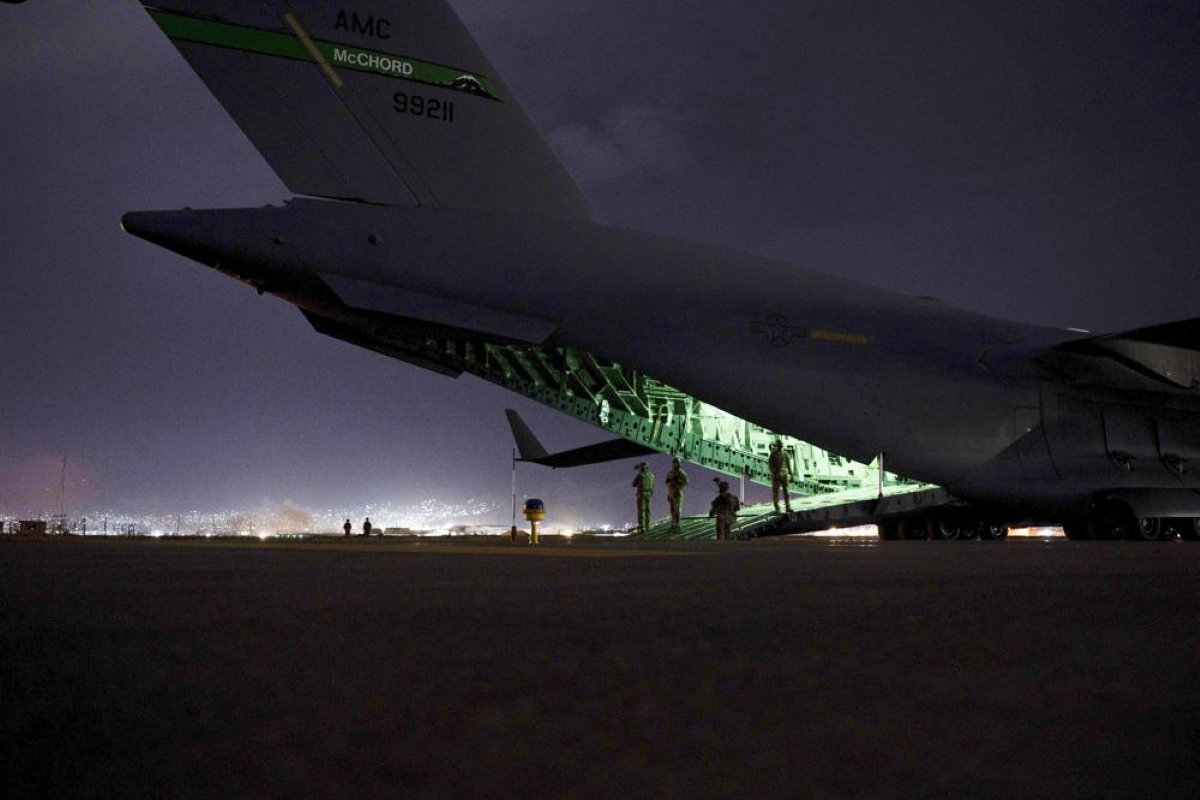It looked like a zombie apocalypse.
As the C-17s comprising the last US troops hurtled down the only tarmac at the Hamid Karzai International Airport, sky was lit up with fireworks, sporadic gunfire and the airfield was strewn with pieces of planes and equipment much like the nation they were leaving.
Advertisement
Before dawn broke, Taliban had entered the airport, the epicenter of chaos and bloodshed during the perilous evacuation, and proclaimed victory.
In the final hours, silence reigned and the area took on a desolate look.
“It just looked apocalyptic,” said Air Force Lt. Col. Braden Coleman, who was in charge of monitoring the outside of his aircraft for artillery fire and other threats. “It looked like one of those zombie movies where all the airplanes had been destroyed, their doors were open, the wheels were broken. There was a plane that was burned all the way. You could see the cockpit was there, and the whole rest of the plane looked like the skeleton of a fish.”
In interviews on Wednesday, members of the Air Force’s 816th Expeditionary Airlift Squadron who flew out on the last military flights detailed their final fraught hours.
“It was just definitely very tense, and we were definitely all on edge watching everything going on to make sure that we were ready,” said Air Force Capt. Kirby Wedan, pilot of MOOSE81, who led the final formation of five aircraft out.
Right behind her C-17 was MOOSE92, where Coleman, the director of operations for the 816th Expeditionary Airlift Squadron, was going through his own checklists for takeoff. When he was told to taxi up a bit farther, he stepped out of the plane to help direct the crew where to go.
“I had my NVG’s on, my night vision goggles, and I had a Raven behind me following me out, making sure that I was, you know, safe,” said Coleman, referring to a member of the specially trained security forces who protect Air Force aircraft.
From Scott Air Force Base in Illinois, Gen. Jacqueline Van Ovost, commander of Air Mobility Command, watched on video screens as the aircraft lined up for takeoff. One screen showed a scroll of the mIRC chat stream — the online message application that the military uses to communicate. And she could hear the orders from Lt. Col. Alex Pelbath, a pilot who was serving as the mission commander for the final departure.
One by one, each C-17 was told to “clamshell” — or close up the ramp. Then Pelbath’s final order: “Flush the force.” With that, Wedan began to move her C-17 down the runway.
“It was definitely different. I’ve never been on an airfield where I didn’t really have permission to take off,” said Wedan, noting the absence of air traffic control in the tower.
Cheers broke out from the troops on board.
“It was a visible relief,” said Wedan.
As the last C-17 cleared Kabul airspace, Pelbath’s delivered a welcome message: “MAF Safe” — shorthand for saying that the Mobility Air Forces were out of harm’s way.
Maj. Gen. Chris Donahue, commander of the U.S. Army 82nd Airborne Division, had been the last soldier to walk up the ramp on the final C-17 to depart. He had been in charge of security for the evacuation mission. He sent his own message: “Job well done. Proud of you all.”
“I walked downstairs and they warned me not to go to the bathroom because there were too many people in front of the lav door,” said Coleman.
Their flight to Kuwait was about four hours long. Coleman said his plane was lucky enough to have extra toilets. Wedan’s had just one — but her crew passed out candy.
“They’re tired and they’re resting now. But I think, for two and a half weeks, you really saw why it was that a lot of us joined,” said Coleman, who enlisted in 2001 after the 11 September attacks. “To see everybody step up to make this happen in the amount of time that it took to happen, to move 124,000 people out in less than three weeks. I mean, I couldn’t be prouder to be a C-17 pilot today.”
